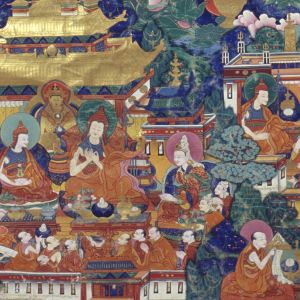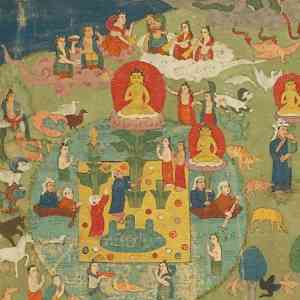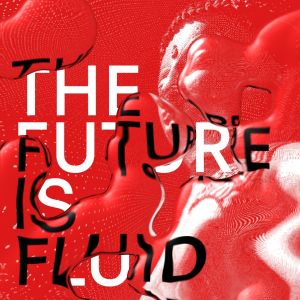
Take a journey through Himalayan art and history guided by Masterworks exhibition curator Karl Debreczeny. Hear how political and religious relationships shaped the exchange of artistic methods and styles. Learn to identify visual elements from different artistic traditions, and meet key regional figures to understand the development of this art through time.
Stop 1: 501 - Introduction to Masterworks with Curator Karl Debreczeny
Curator Karl Debreczeny traces the journey of Himalayan art through the interconnected relationships between Tibet and surrounding cultures. He also introduces the format of the audio guide and encourages looking at each section while listening.
Stop 2: 502 – India and Kashmir
Art from Northeastern India and the northwest region of Kashmir served as early inspiration for Himalayan art. What are the important places, practices, and people that created this historical moment and contributed to the spread of this art?
Stop 3: 503–Snake Goddess Manasa and Tara
Similarities between this stone sculpture from India and this metal one from Tibet elucidate the influence of early Indian art on subsequent artistic traditions.
Stop 4: 504 –Kashmira
This small metal sculpture, from an important center of Buddhist art, appears to have traveled from India to Tibet across the centuries.
Stop 5: 505 – Nepal
The Kathmandu Valley is known for its high-quality craftsmanship. What are some of the main artistic techniques and visual strategies that developed here? How did artisans spread the practices of painting and lost wax casting?
Stop 6: 506 – Four Mandalas of the Vajravali Cycle
The recorded origin of this painting tells the story of famous Nepalese artisans drawn to Ngor Monastery through the power of a monk’s prayer.
Stop 7: 507 – Early Tibet
What visual references did artisans useto create a distinctive Tibetan style? How can we seethe influenceof Northeast Indian and Nepalese styles in these paintings?
Stop 8: 508 –The Prajnaparamita Manuscript
The story featured on this frontispiece and the clothing of the figures highlight the importance of patronage in the creation of sacred books.
Stop 9: 509 – Classic Tibet
What does the term Classic Tibetan art mean? What are the main schools and styles? Which historical figures and political relationships were key in developing and spreading these styles?
Stop 10: 510 – Hevajra
Attempts to identify the artist of this painting teach us about the Classic Tibetan schools of art and their founders.
Stop 11: 511 – East Tibet
How were artisans in these regions inspired by Classic Tibetan painting traditions, and how did they develop distinctive regional styles? What unique visual elements of Kham and Amdo styles do we see in this section?
Stop 12: 512 –The Eighth Karmapa, Mikyo Dorje
This statue of the Eighth Karmapa depicts an important artistic patron and showcases innovations in the region’s art.
Stop 13: 513 – China and Mongolia
How did economic, political, and religious relationships shape the spread of artistic practices to China and Mongolia? What new visual styles, materials, and techniques were shared by artists during this time?
Stop 14: 514 – The Arhat Chudapantaka
This painting is compositionally similar to silk paintings distributed by the Chinese emperor to religious and political allies yet also features some distinctly Tibetan innovations.
Stop 15: 515 –The Bardo Thodrol
This manuscript of the text commonly known as “The Tibetan Book of the Dead” was translated into a Mongolian script introduced by order of Genghis Khan. Close political relationships between the Tibetans and Mongolians meant these texts—and conversions toTibetan Buddhism—became increasingly common in Mongolia.
Stop 16: 515.1 – Bonus Bardo Reading (From World Is Sound)
Curated by Karl Debreczeny.
Thank you to our members for making this rotation of Masterworks possible.Please support the Rubin or become a member today.



